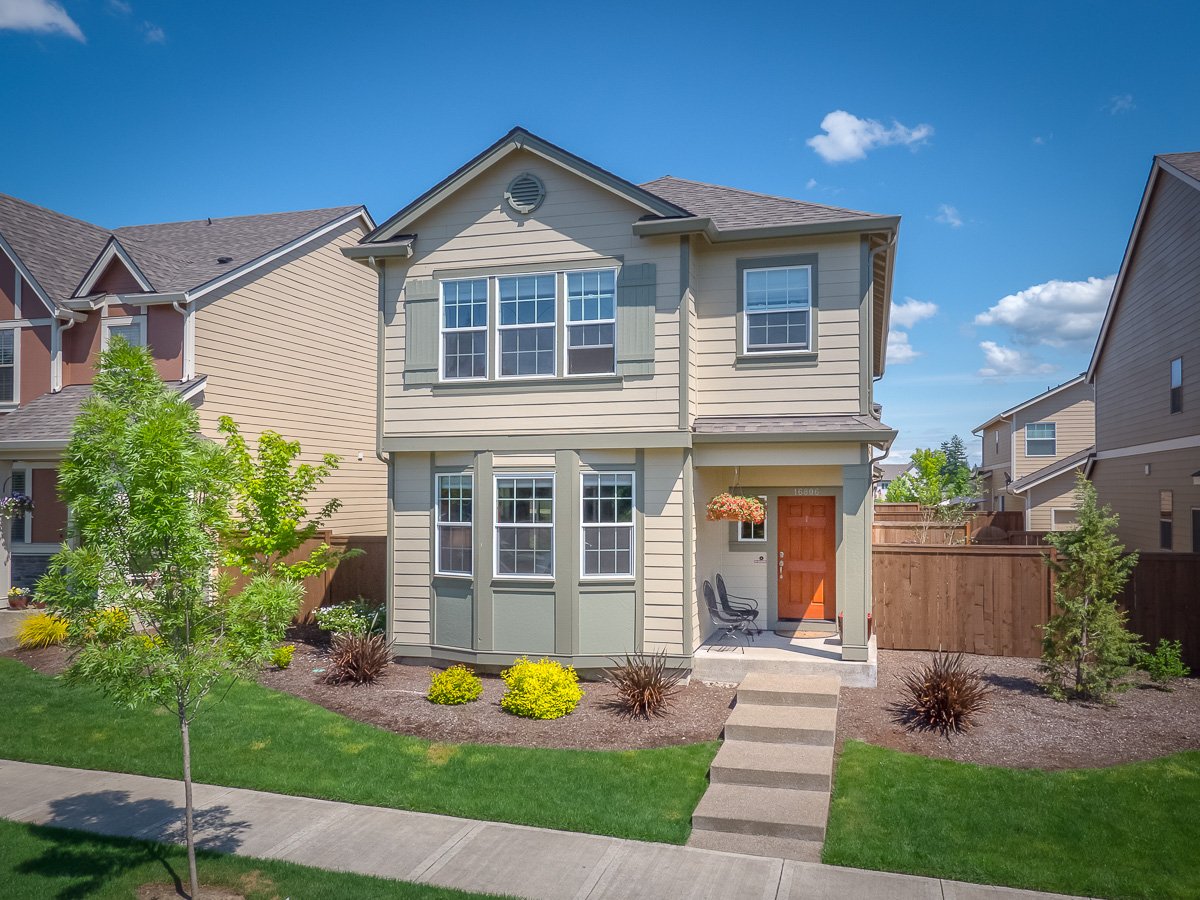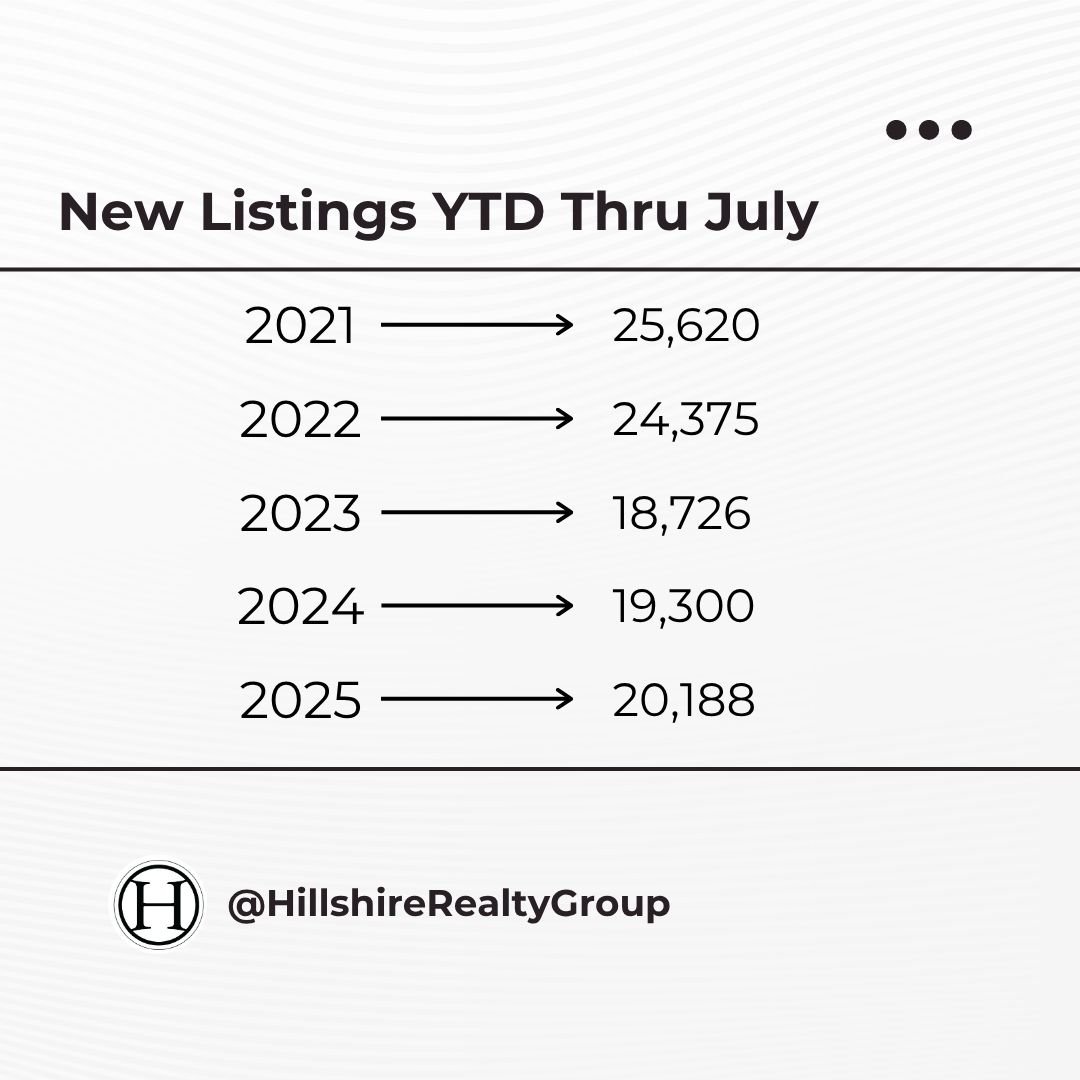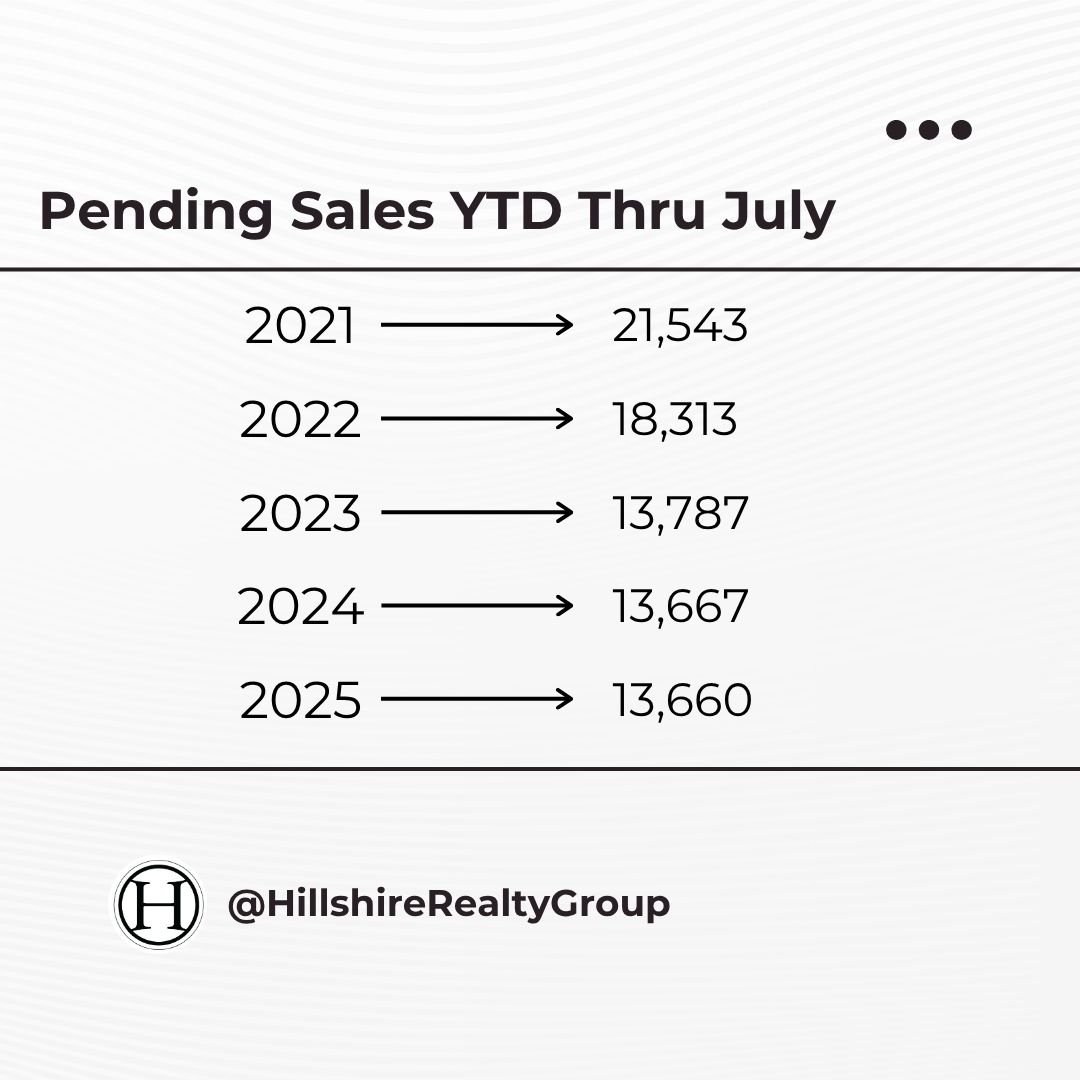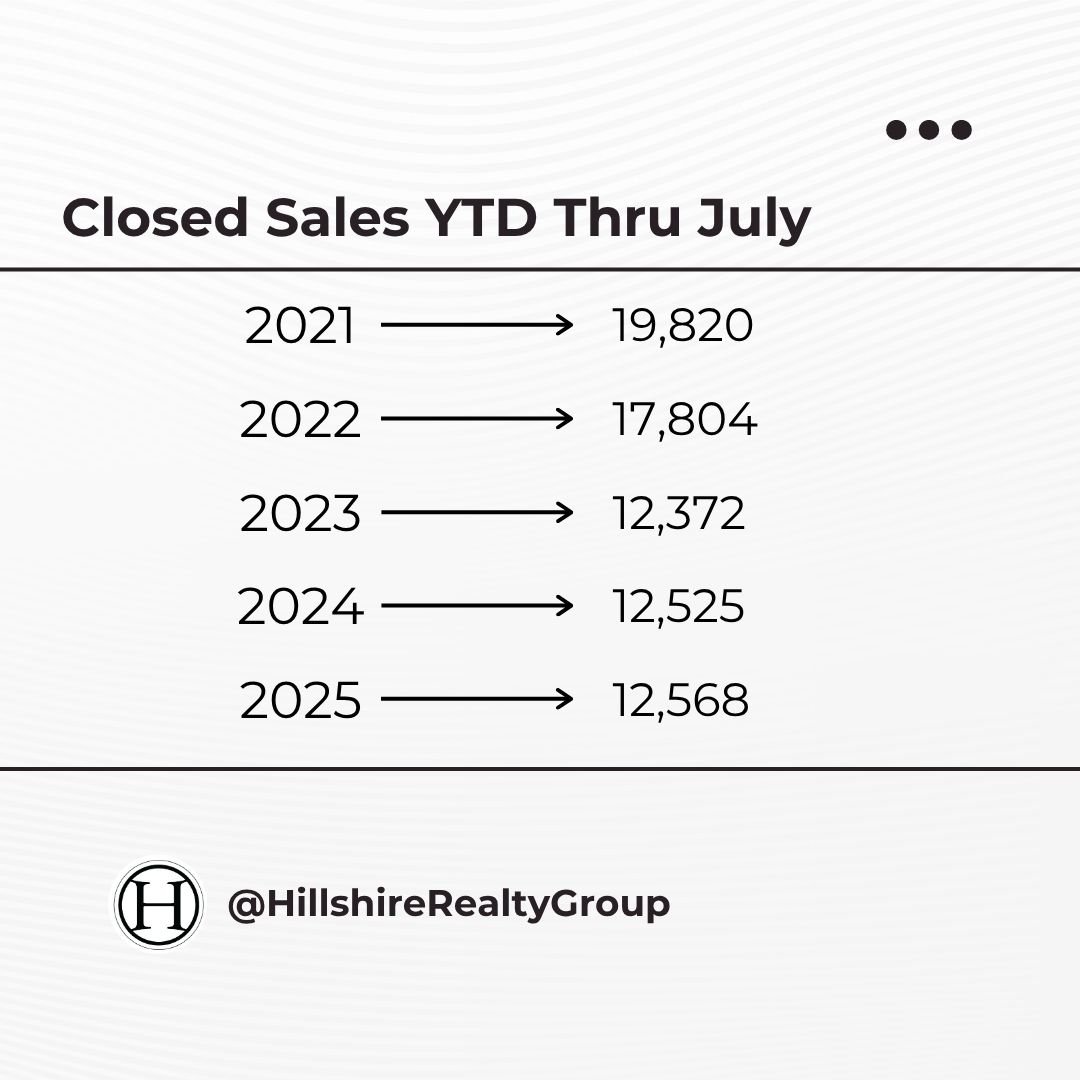Over the past four years, the Portland metro housing market has undergone a fundamental shift—one that's not just about seasonal cycles or economic soft spots, but a long-term change in behavior driven by affordability and market fatigue.
📈 A Look Back at the Numbers
Let’s start with the data. Each year tells a story, and from 2021 to 2025, the story is clear: sellers are listing less, buyers are buying less, and affordability is rewriting the rules of real estate.
This slide shows that in 2021, we had 25,620 new listings by July. In 2025, we’re at 20,188. That’s a 21% decline in inventory over four years.
Yes, we’re up 4.6% in new listings compared to 2024—but we’re still far off from pre-2022 norms. We’re not just having a “slow year.” We are experiencing a new market baseline.
🔄 Buyer Activity: A Market That’s Flattened
Now let’s look at demand. While listings have increased modestly this year, pending sales haven’t budged.
In 2021, 21,543 homes went pending by July. This year? Just 13,660. And look at the trend—almost zero change in the last three years.
It’s now statistically improbable that even 70% of the homes listed in 2025 will go pending in 2025, the highest amount of unsold homes in over a decade. For comparison, 2021’s ratio was around 84%.
🏁 Closed Sales: The Real Benchmark
Pending sales tell us what might happen. Closed sales tell us what did happen.
We’ve essentially been stuck in the same range—just above 12,000 closings—for three years straight. Compare that to nearly 20,000 in 2021, and you can see the pace of the market has changed dramatically.
We are operating in a lower-volume environment—and will likely remain so for the foreseeable future.
💵 The Affordability Wall
What’s the real cause of all this?
📉 Not interest rates alone.
📉 Not listing supply alone.
📍 It’s affordability.
According to the most recent RMLS report, a median-income household in Portland can now afford only 87% of a mortgage payment on a median-priced home, even with a 20% down payment and a 6.8% interest rate. That means the average family is priced out.
People can’t buy what they can’t afford. This is the crux of our low-transaction, high-stalemate market.
🧭 What This Means for Buyers and Sellers
If you’re a seller thinking about entering the market: you need to know this isn’t the same landscape you may have experienced in the past. Pricing, positioning, and patience matter more than ever.
If you’re a buyer: opportunities are out there, but affordability has to be your compass. It may be a good time to get advice—not just listing alerts.
Final Thoughts
We’re not in a frozen market—we’re in a transformed one. The data supports what we feel: fewer people are buying and selling, and affordability is the main reason. That’s not a momentary dip as we are three years into a high-interest rate environment. That’s the new reality.
The question isn't “When will the market go back to normal?”
The better question is: How do we make the best decisions in the market we have today?
If you're ready to talk strategy, let’s connect.
—David Caldwell
Principal Broker, Hillshire Realty Group




